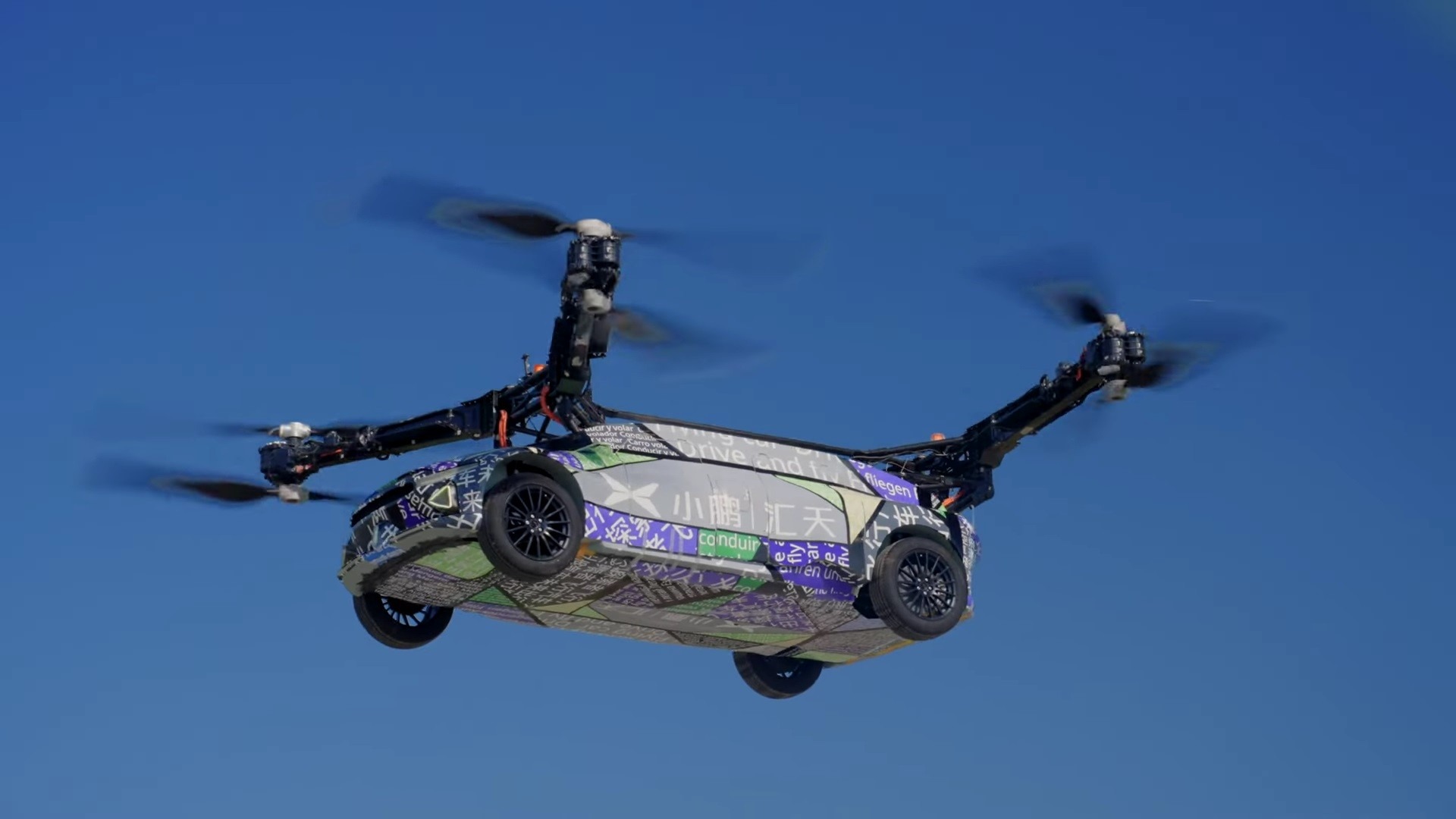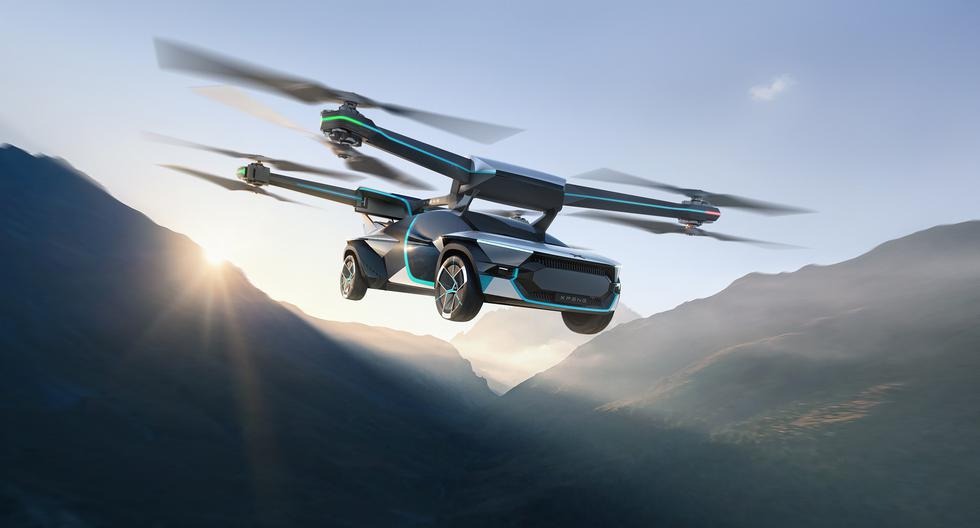Chinese automaker XPeng has updated the design of its AeroHT flying car – a luxury electric sportster with a fold-out vertical-lift octacopter system on the roof. It looks absolutely nutty, but a two-ton flying prototype indicates this is no joke.

When we first ran across this machine about 12 months ago, it looked a lot cooler and was also a ton more dangerous. The original HT Aero flying supercar design used a much more compact VTOL system featuring just two electric rotors with large-diameter blades. These were mounted on articulating arms designed to fold away under the car’s rear bodywork, making for an exceptionally pretty and sci-fi looking design, albeit at the expense of safety and complexity.

It makes sense that the company has switched things up to an eight-prop system for the latest design – this adds a bunch of redundancy in case something fails. It’s much bulkier, though, and as a result the new design looks less like a Minority Report hypercar and more like a luxury electric rally-raider with a massive box on top, as you can see in the render video below.

Why not? Well, if weight is the enemy of flight, it’s the mortal nemesis of electric VTOL flight – particularly for straight-up wingless multicopter designs like this, which need to burn energy constantly to stay airborne. Lithium batteries are heavy enough that even single-purpose manned multicopter air taxis all suffer from heavily restricted endurance and range figures.

Street-legal electric cars are typically very heavy in and of themselves; they need to pass crash tests. They need separate road-going powertrains, suspension, brakes, big wheels, windscreen wipers and cup holders, along with great big heavy battery packs. AeroHT’s practical little air taxi weighs around 560 kg (1,235 lb) with nobody sitting in it, and still only gets around 35 minutes out of a battery. The flying car’s weight could end up being more than four times higher, and it still only flies two people.






